 Washington Trails
Association
Washington Trails
Association
Trails for everyone, forever
Permit lotteries manage visitor numbers in scenic areas, but their distribution can be inequitable. Why do they exist, how can the process be improved, and what other solutions can be used to reduce the need for them in strapped-for-cash public lands?
Every year, thousands of people enjoy backpacking trips on the stunning and strenuous Wonderland Trail or in the Enchantments. They’re incredible places. When trails traverse wildflower dotted meadows and meander past sapphire-blue lakes resting in granite basins ringed by golden larch trees, plenty of people want to hike them!
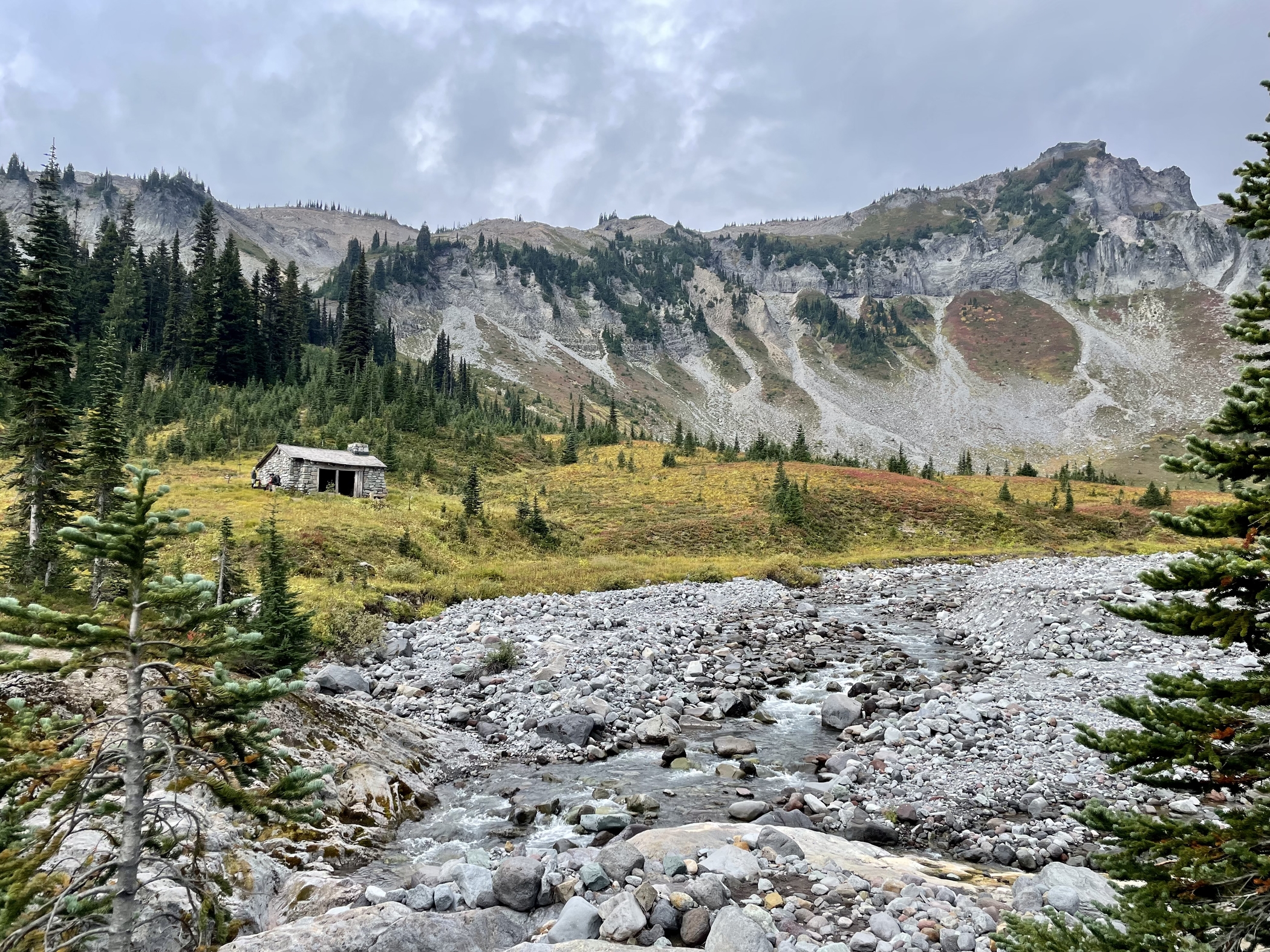
But the thousands who hike there are a mere fraction of the number who want to visit. In massively popular, scenic destinations, a common solution land managers turn to in order to mitigate high visitation is permit lotteries.
While WTA understands the challenges that public land managers face, we also believe that permits are just one tool in a land manager's toolbox to handle the impacts of people recreating on public lands. And permitting one place can often move the challenges faced there to a new area as people seek out nearby, unpermitted locations. Many of the issues agencies face can be dealt with in a more sustainable way with increased funding for more staff on the ground and increased trail and recreation maintenance. We believe that permit lotteries should be a last resort, after other options have been exhausted.
Permit lotteries aren’t new, they’ve been used for years to control the number of people who access an area at a given time. Permit lotteries are in place in Yosemite to climb the cables of Half Dome, to raft the Grand Canyon; there’s even a lottery for the White House easter egg roll.
However, permit lotteries in Washington are fairly new. They’ve been implemented at Mount Rainier and North Cascades National Park largely in response to the sharp increase in people becoming interested in getting outside with fewer land management staff on the ground like rangers to educate visitors.
Agencies have a dual mandate of providing recreational access to public lands and protecting those lands for the future.
But in the face of decreasing federal funding, several national parks and forests have adopted permit lotteries, as there are fewer resources available for the combination of on-the-ground education, enforcement and visitor management that would be more equitable.
The need for visitor management is real. People have documented their concern about increased visitation and unsustainable use since the 1970s. Articles from that time report trash being burned or buried in the backcountry and a veritable spiderweb of social trails at popular viewpoints.
Mount Rainier Wilderness District Ranger Daniel van der Elst recalls overuse being an issue as far back as the 1960s, when conflicts between campers vying for prime camping spots were a driver for the park to pursue more proactive visitor management.
"This helped spread use out, and prevented campers from piling up in specific campsites or trying to pitch camp in an already full site," Daniel said.
In the Enchantments, too many unsanctioned campsites were degrading the quality of the landscape and trash was becoming a problem.
"In 1987, a management plan was completed for Alpine Lakes Wilderness and as part of that process, an annual limited-entry lottery permit system was implemented to control the amount of overnight use, said Victoria Wilkins, public affairs officer for the Okanogan-Wenatchee National Forest. "The reason for the permit system was to protect wilderness character and fragile alpine resources."
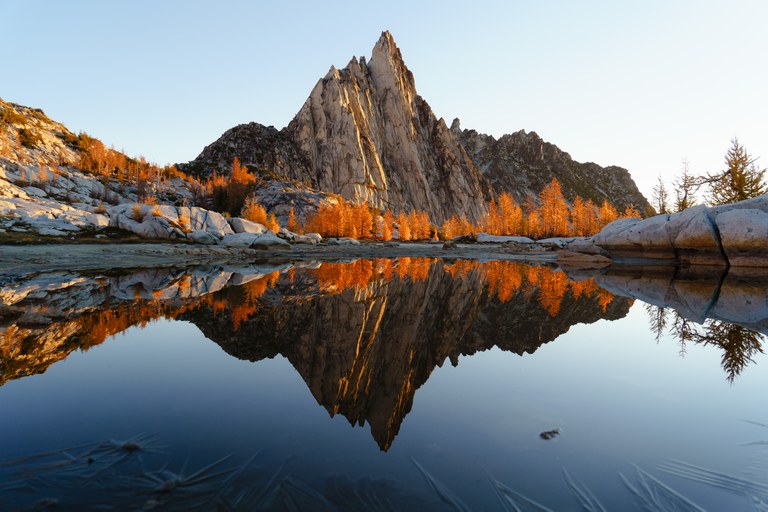
To preserve the character of these places, but still keep them open for visitation, both areas implemented a permit system in the 1980s to manage the number of visitors at any one time. Today, Mount Rainier and the Enchantments retain much of the beauty they are known for, and the areas remain incredibly popular. So more recently, they've both introduced permit lotteries, which further reduces the number of people who may stay overnight in these places.
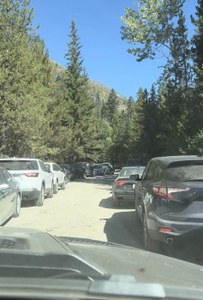
But day-use remains high. It's not uncommon for visitors to Mount Rainier to wait for an hour or more before they could even enter the park, and once in, parking can be scarce on sunny summer days. Visitors need education and help understanding why it's important to stay on trail, not to feed wildlife or to protect delicate meadows during events that draw crowds, like the 2023 Perseids meteor shower. That's extra work for an already maxed-out workforce.
In the Enchantments, rangers are dealing with more search-and-rescue calls, mountain goats are becoming more habituated (and consequently more aggressive) to people.
Increased parking at the trailheads and along the entry road is restricting access for emergency vehicles as more people attempt to thru-hike the Enchantments in order to avoid needing permits.
As spending time outside is becoming more popular, people are drawn to explore permitted areas famous for their beauty. In reaction, more land managers have implemented permit lotteries. Those interested in hiking in a permitted area apply during a specific window of time (usually the winter), then land managers randomly select a percentage of those applicants to receive a permit.
While this can effectively reduce the number of people on the landscape, the need for visitor management doesn't go away with permitting. Regardless of how many people are hiking in an area, if they don't know hiking etiquette, they may improperly dispose of waste, hike off trail or cut switchbacks. In a fragile landscape, relative impact of visitors decreases as the number of visitors increases ("The Relationship between Amount of Visitor Use and Environmental Impacts.") If one person who wins a permit in a lottery makes a fire in an alpine meadow, the damage is still done.
WTA believes permit lotteries are a temporary solution, and that many of the issues agencies face can be dealt with in a more sustainable way with increased funding.
More funding could provide on-the-ground rangers to educate and enforce wilderness regulations and improve signage indicating trail routes and sanctioned campgrounds.
Permit lotteries should be a last resort, after other options have been exhausted. Wilderness documentation that the U.S. Forest Service uses to guide management decisions echoes this, and the dual mandate still stands.
Permit lotteries require people to know they need a permit in the first place, with the added complexity of being able to navigate a sometimes confusing morass of campsite, trail and route names. It also requires familiarity with recreation.gov’s online reservation system. (Recreation.gov is the website most land managers use for their permit distribution, and is managed by Booz Allen Hamilton, a private contractor).
Anyone who has tried to snag a permit for the Wonderland trail or the Enchantments can tell you rec.gov's system requires a mind predisposed to planning and logistics as well as a thorough knowledge of place names, itineraries and their alternates.
The people who benefit most from this setup are people with prior knowledge and time to spare. Individuals who have friends or family that have snagged permits before have an advantage over someone new to visiting permitted areas, regardless of that individual's understanding of responsible recreation. People who have navigated recreation.gov before have an advantage. Those new to the area they’re trying to visit or for whom English is not a first language will have a harder time.
Lotteries also require that hikers know they’ll be able to do the hike they’re planning months before they do it. This is something that disabled hikers, for example, can’t predict months in advance, but even an able-bodied hiker can’t know for sure that they’ll be able to do a backpacking trip they planned for August in February.
If you can’t be at a computer right when the lottery window opens, the chances that you’ll get your dream itinerary are vanishingly small. Shift workers or hourly workers will have a harder time securing a permit than office workers. Trying to solo backpack? You'll have a disadvantage. Members of large groups can each try individually to snag a permit for the date they’re trying to go. Got kids? Summers and weekends are the busiest times of year at national parks, and you can’t take advantage of the weekdays that are occasionally more available.
One scale-balancing effort is the recent digitization of permits. Until 2020 you had to fax your permit requests in. How many of you have access to a fax machine? Or know how to use one? Daniel joked that in the days of faxing in permit requests, randomizing individuals was easy because the fax machine was so busy the requests just piled up on the office floor and rangers pulled requests from the pile.
But it was a drain on staffing to manually assign itineraries. Online applications, while not necessarily available to all, are certainly easier than faxing something in. And they eased the load on rangers:
“The shift to rec.gov has been beneficial for the public and for park staff — because we’re saving that week of logistics by asking the public to do their own optimization; they're building their own trips on rec.gov,” Daniel said.
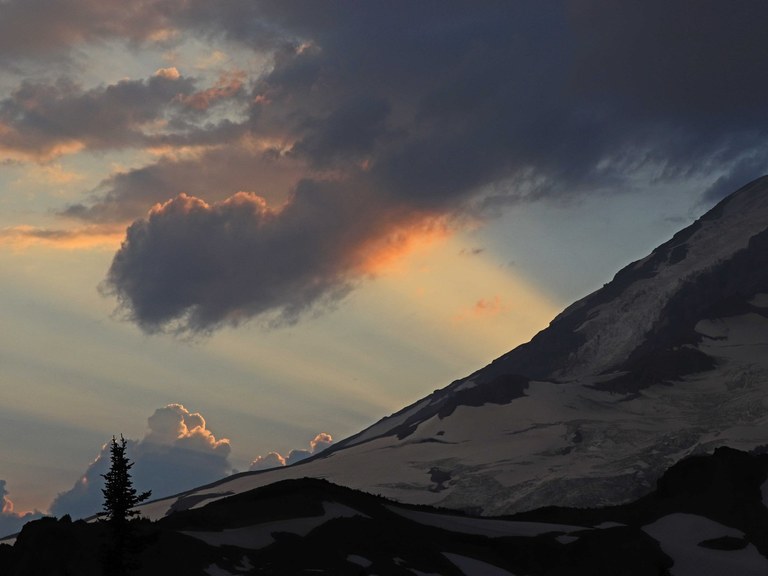
Interestingly, the early access lottery — which Mount Rainier introduced 5 years ago — put another mark in the equity column.
“Initially [rec.gov] had block releases of permits. On one day, they would release a chunk of days’ worth of permits and there would be a free for all," Daniel said. "With that scenario, no one would get a Wonderland Trail itinerary, because you need to secure multiple campsites in a specific order to do the Wonderland. [So] we came up with the early access lottery to give people a better chance to get a Wonderland trip.”
Is the early access lottery working to better distribute permits more equitably? There are signs it’s better than it used to be. Daniel says there are slightly fewer Wonderland trips happening overall now that people are putting their itineraries together themselves, but there’s been an increase in alternate routes, which may signify that people are discovering compelling alternates to the standard Wonderland route.

“We’re seeing more creativity — for example people will do the Wonderland Trail and extend onto the Eastside trail.”
And Mount Rainier’s early access lottery was called out in a social science paper as a benefit for equity. Anecdotally, Daniel says the hikers he’s talking to are happy with it, “but of course, they’re the ones who won the lottery.”
WTA always seeks pragmatic answers, and we understand that our partners have to work with the slow grind of bureaucracy and insufficient funding, where restricting access may be the only immediate answer to managing visitation in sensitive areas.
But implementing permit lotteries in one area pushes users to non-permitted areas that are likely not getting the staffing or resources they need, so you’re increasing demand on a different part of the landscape, rather than investing well to manage the demand at the popular location.
While the shift to digital has flattened the playing field, and information about permits has become easier to find online, our agency partners need more holistic investment to improve the recreation experience on their lands.
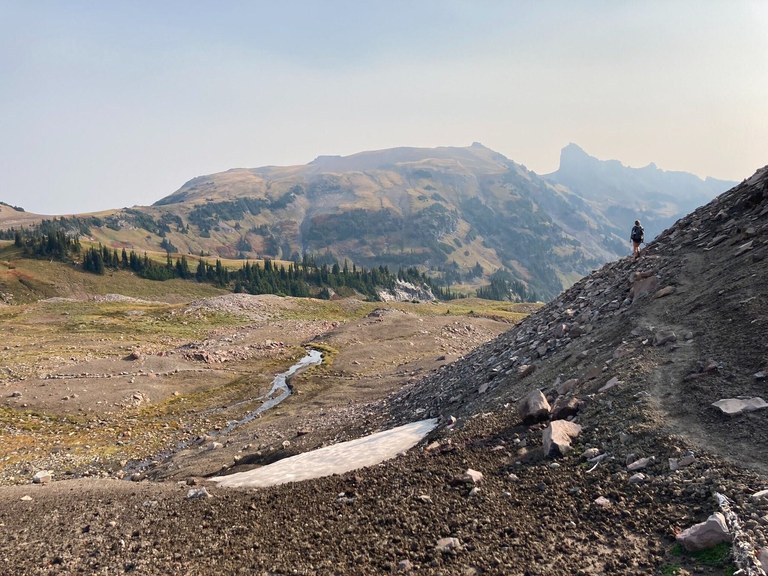 A variety of solutions can be implemented to preserve wilderness character while retaining access to Washington's most beautiful landscapes. Photo by trip reporter Rachel Wendling.
A variety of solutions can be implemented to preserve wilderness character while retaining access to Washington's most beautiful landscapes. Photo by trip reporter Rachel Wendling.The solution to this is proper funding from Congress — an adequately funded Park Service and U.S. Forest Service should be able to provide not only the maintenance that trails need on an annual basis, they should have rangers on the ground interacting with the public and teaching them about responsible recreation. WTA believes four approaches are needed to protect landscapes while ensuring equitable access.
Educate hikers. Of course all this takes time, and in the meantime, land managers trying to uphold that dual mandate of recreation and conservation will continue to use permits when they need to. WTA is stepping up to help as well. Education about responsible recreation is crucial, and our Trail Smarts work as well as our trailhead ambassador programs are using online tools and volunteers at trailheads to spread responsible hiking practices in our increasingly diverse hiking community.
WTA believes you should hike the way you want to. Apply for Wonderland permits. Visit the Enchantments. But there are thousands of trails to explore here, and many of them don’t require permits at all. Consider branching out. You may want to have a specific experience, but doesn’t an experience that’s specifically your own sound good, too?